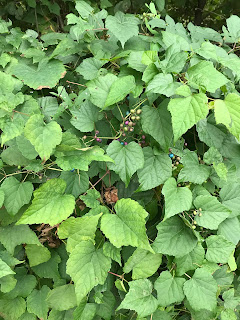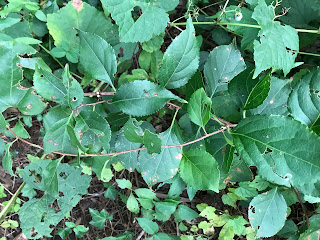In the first part of the project, students removed aggressive invasive species, focusing on Japanese knotweed, porcelain berry, multiflora rose, and oriental bittersweet, and in the process revealing oak and pinchberry seedlings as well as native flowers that were being choked out by the faster-growing vines and other invasives.
In part 2, they planted several varieties of native flowers and shrubs that support pollinator species of bees and butterflies, and also provide haven for the numerous insects needed by native and migratory birds. Many native plants are quick to establish themselves, growing back from roots year after year as well as reseeding themselves, and are ideal as the base of a food chain that supports the growth of numerous varieties of insects that in turn feed cardinals, wrens, and woodpeckers, among many other species of birds either local to New Jersey or that migrate along the New Jersey coast.
boneset
brown-eyed susan
coneflower (echinacea)
goldenrod (foreground) and boneset
jewelweed
milkweed
mountain mint
New England aster
phlox
For more information, visit the Native Plant Finder website, where you can enter a zip code for anywhere in the US and get information based on the research of Dr. Doug Tallamy, who is an expert on the science of interactions between insects and plants (and Professor and Chair of the Department of Entomology and Wildlife Ecology at the University of Delaware).
All photos courtesy of Catherine N. Duckett, Associate Dean, School of Science at Monmouth University, whose research is on evolutionary entomology.




















